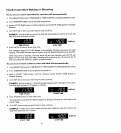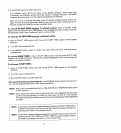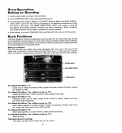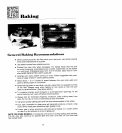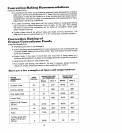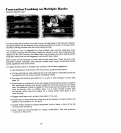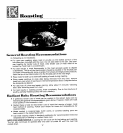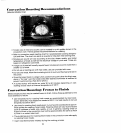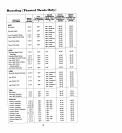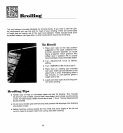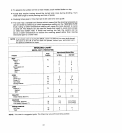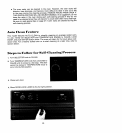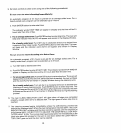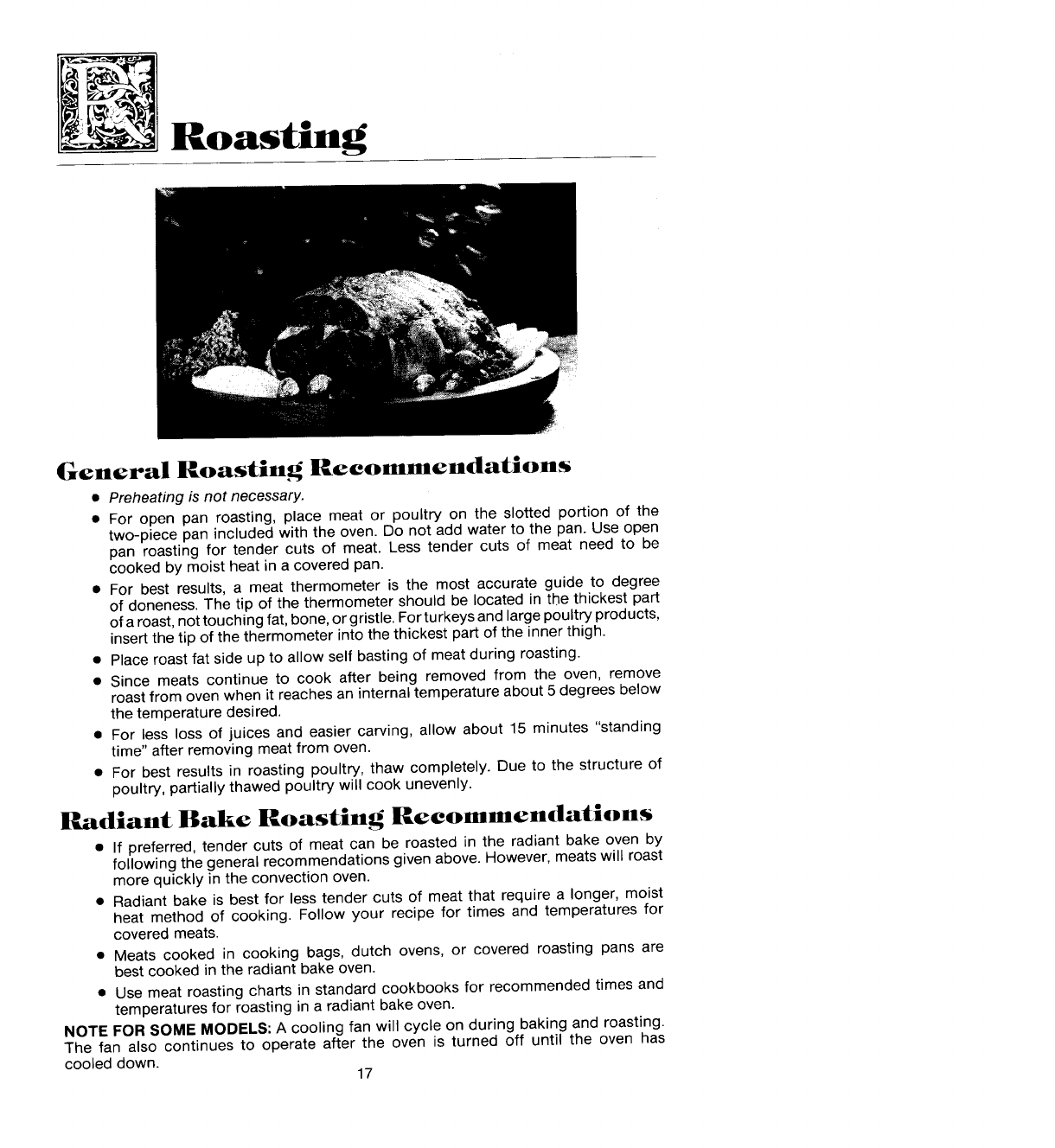
Roasting
General Roasting Recommendations
• Preheating is not necessary.
• For open pan roasting, place meat or poultry on the slotted portion of the
two-piece pan included with the oven. Do not add water to the pan. Use open
pan roasting for tender cuts of meat. Less tender cuts of meat need to be
cooked by moist heat in a covered pan.
• For best results, a meat thermometer is the most accurate guide to degree
of doneness. The tip of the thermometer should be located in the thickest part
of a roast, not touching fat, bone, or gristle. For turkeys and large poultry products,
insert the tip of the thermometer into the thickest part of the inner thigh.
• Place roast fat side up to allow self basting of meat during roasting.
• Since meats continue to cook after being removed from the oven, remove
roast from oven when it reaches an internal temperature about 5 degrees below
the temperature desired.
• For less loss of juices and easier carving, allow about 15 minutes "standing
time" after removing meat from oven.
• For best results in roasting poultry, thaw completely. Due to the structure of
poultry, partially thawed poultry will cook unevenly.
Radiant Bake Roasting Recommendations
• If preferred, tender cuts of meat can be roasted in the radiant bake oven by
following the general recommendations given above. However, meats will roast
more quickly in the convection oven.
• Radiant bake is best for less tender cuts of meat that require a longer, moist
heat method of cooking. Follow your recipe for times and temperatures for
covered meats.
• Meats cooked in cooking bags, dutch ovens, or covered roasting pans are
best cooked in the radiant bake oven.
• Use meat roasting charts in standard cookbooks for recommended times and
temperatures for roasting in a radiant bake oven.
NOTE FOR SOME MODELS: A cooling fan will cycle on during baking and roasting.
The fan also continues to operate after the oven is turned off until the oven has
cooled down.
17




